If you’ve ever walked into a plant nursery, especially one in your nearest big box home improvement or farm and garden store, you may have encountered some not-so-good-looking celosias.
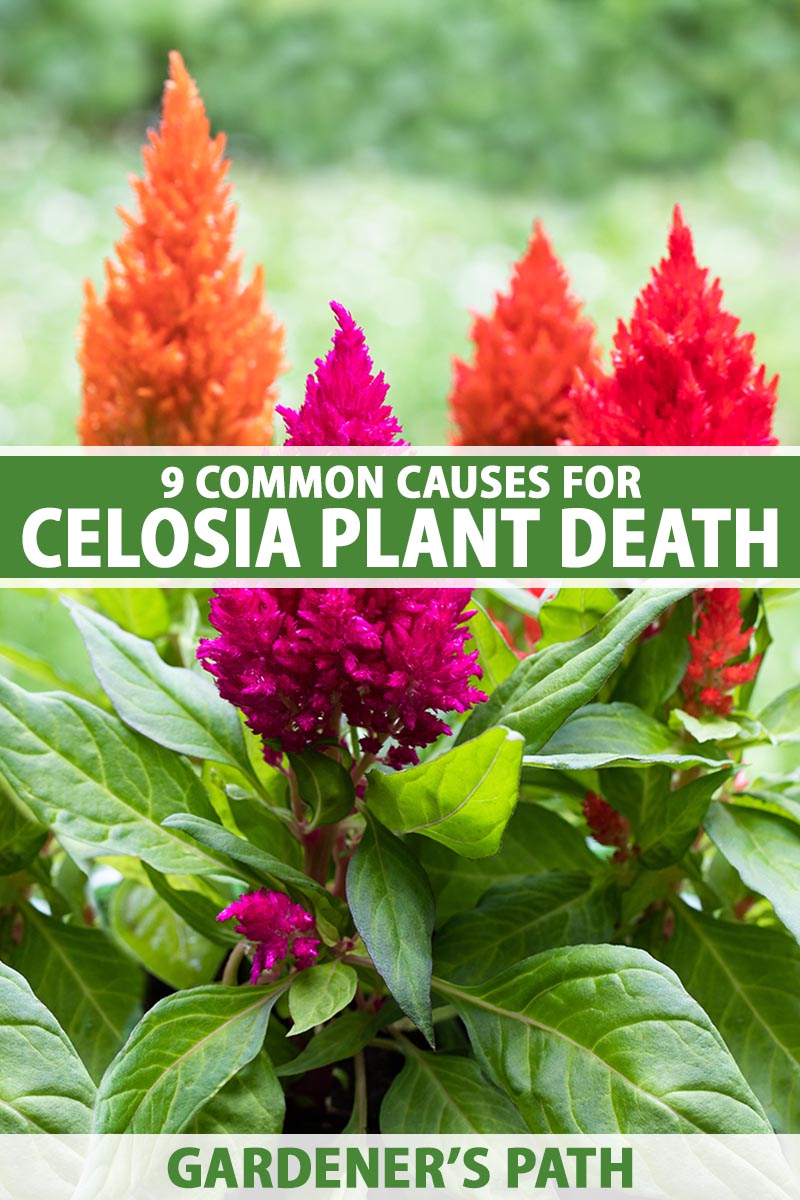
We link to vendors to help you find relevant products. If you buy from one of our links, we may earn a commission.
With their unique and captivating flower heads, these vibrant, eye-catching plants can sometimes appear wilted, faded, or even on the brink of death.
The sight can be disheartening, especially if you’re a fan of these stunning ornamentals.
But fear not, for there are reasons behind the celosia plant’s untimely demise, and understanding them can help you to prevent such unfortunate outcomes!
In this article, we will talk about the various factors that contribute to the decline of these plants, shedding light on the causes behind their withering and offering valuable insights to keep them thriving.
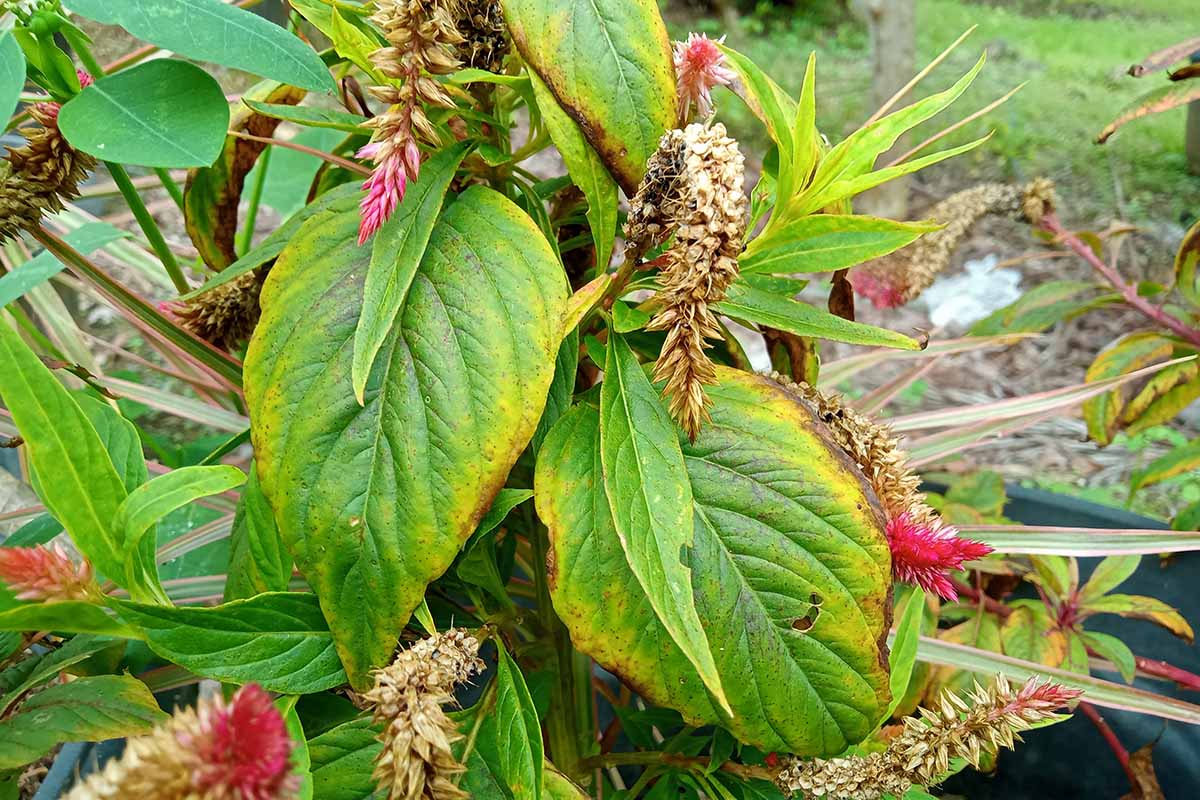
Whether you’re a passionate gardener or a casual flower enthusiast, join us as we explore the common reasons for celosia plant death and discover how to ensure their longevity and vibrancy in your garden.
If you are interested in learning more about growing these cool, crazy, and colorful specimens, check out our celosia growing guide.
Now, let’s look into the top reasons why celosia plants may die.
9 Reasons Why Celosia Plants Die
1. Botrytis Blight
Celosia is susceptible to Botrytis blight, caused by the fungal pathogen Botrytis cinerea. This disease is commonly referred to as gray mold or gray rot.
It causes death to the above-ground parts, including the leaves, stems, and flowers.
The flowers and buds will turn brown or develop abnormally. Flowers may have brown and irregular flecks on them, and soft brown spots will appear on the aerial parts of your celosia after a cool, damp period.
If your celosia has contracted this disease, it can significantly damage the affected tissues.
If you notice your celosia has large numbers of dusty, fuzzy, gray spores, it could be a strong indication of this infection as well.
These spores are produced on decaying plant material, such as wilted flowers or damaged leaves.
These spores can easily spread through air currents, splashing water, or physical contact, so if you have any nearby, they can affect other healthy plants around your infected one.
2. Cold Damage
Celosia is considered a summer-blooming annual in most climates in the US. When the first fall frost comes, it is usually the sign that the season has almost come to an end for these plants.
They’re generally sensitive to frost and they will experience damage when exposed to freezing temperatures.
The leaves and tender growth are typically first to be affected. Cold-damaged tissue will turn brown or black and shrivel.
Sometimes the first frost is not enough to damage the whole plant, but after a few frosts or a hard freeze, Mother Nature will eventually take its course and it will die.
Exposure to frost causes ice crystals to form within the plant tissue, damaging the cells.
If your celosia has frost damage, it may experience discoloration, wilting, stunted growth, leaf and stem necrosis, and flower and bud damage.
When celosia are exposed to cold temperatures slightly higher than those when frost is present, they can still experience stunted growth, discoloration, leaf curling, reduced flowering, and a general decline.
Since these are heat-loving plants, they prefer to stay within a comfortable range of 60 to 75°F.
To ensure the health and vitality of your celosia, it is important to wait until after the last frost has passed before planting them outdoors.
3. Leaf Spot
Various fungal and bacterial pathogens can cause leaf spots, or small, dark-colored lesions on the leaves.
The fungal pathogen Alternaria alternata typically forms circular or irregularly-shaped spots with brown or black coloration.
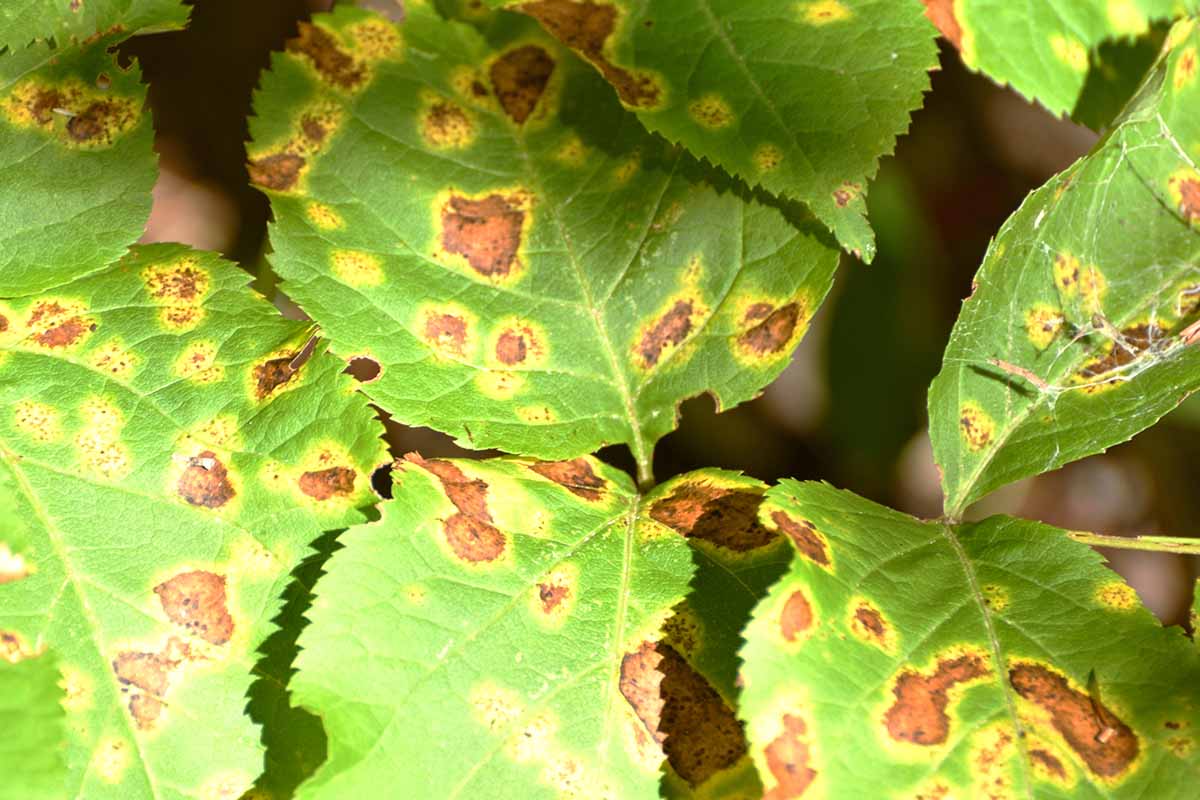
Cercospora is another fungal pathogen that causes leaf spots which develop a center that turns tan, or gray to brown spots with purple or brown borders.
Over time they can enlarge and affected patches become irregular and angular in shape.
Phyllosticta fungal pathogens create small, circular spots that can be beige, gray, brown, or black with a brownish or reddish border.
The spots can vary in size and have the potential to become quite large.
Xanthomonas is a bacterial pathogen that causes angular lesions with a water-soaked appearance of brownish to black coloration with a distinct yellow halo.
4. Overwatering
Overwatering celosias can lead to their decline. Too much moisture can cause the roots to become waterlogged and suffocated.
This can compromise the plant’s ability to absorb water and nutrients, causing wilting, yellowing, and eventual death.

Overwatering can also lead to poor soil aeration, reduced oxygen availability, and nutrient imbalances, compromising your plant’s health.
It is not solely the overwatering itself that causes them to die, it is often the combination of the excessive moisture and subsequent infection by pathogens that can lead to your celosia dying, which we’ll go into more detail a bit later in the section on root rot.
Celosia can also experience a condition called edema, which occurs when there is an imbalance in water uptake and transpiration. The cells within the plant tissue become filled with excessive water, forming blister-like lesions on the leaves.
Over time, the affected cells can rupture or collapse, causing tissue damage and cell death.
Edema is often associated with excessive moisture levels in the soil and high humidity levels in the surrounding environment.
5. Pests
Celosia are vulnerable to various pests, including spider mites, whiteflies, rabbits, aphids, and slugs, which can all cause significant damage and potentially lead to the death of the plant.
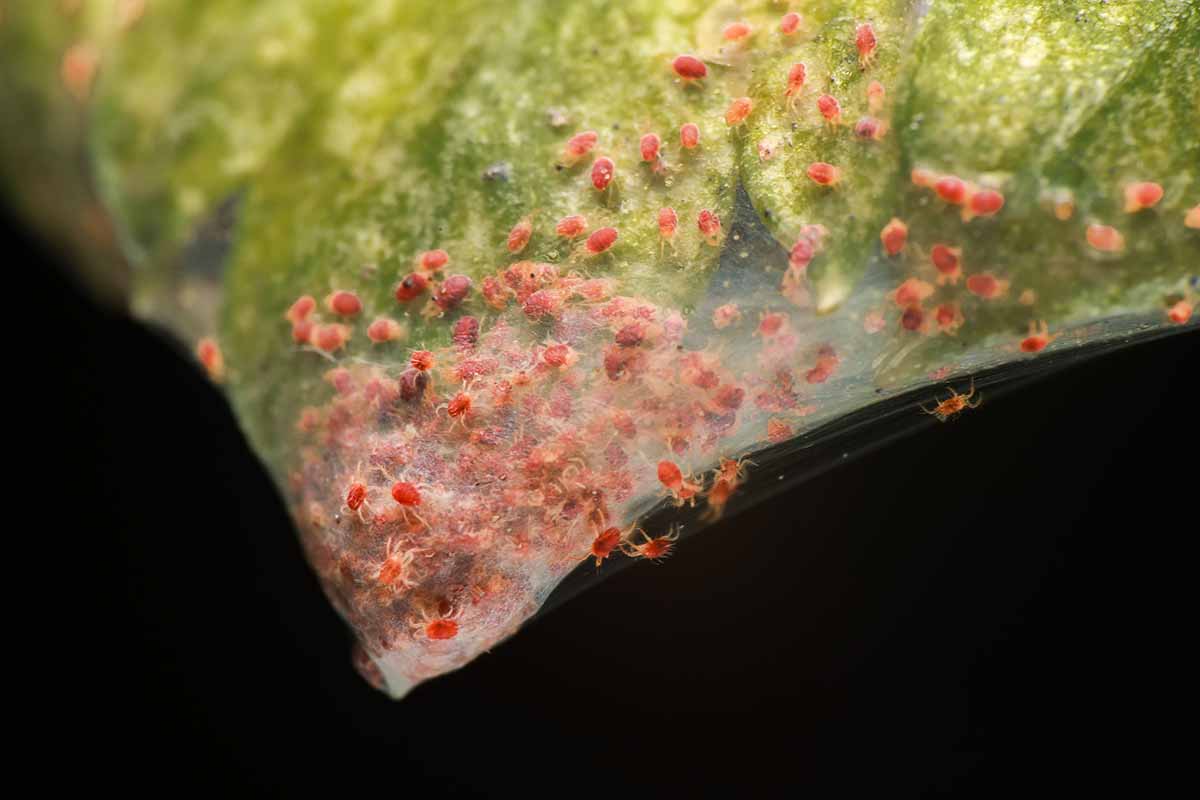
Spider mites are tiny arachnids that feed on the sap, causing yellowing, speckled leaves. Leaving webbing in their wake, they can multiply rapidly, infesting the entire plant if left untreated.
Whiteflies are small insects that also suck the sap from the leaves, causing wilting, yellowing, and stunted growth. They secrete honeydew, attracting mold and fungal diseases.
Rabbits are known to nibble on tender foliage and flowers, causing severe damage or even complete defoliation.
Aphids are sap-sucking insects that reproduce quickly and can distort leaves, potentially leading to stunted growth. They also exude honeydew and may transmit viral diseases.
Slugs are nocturnal pests that feed on the leaves, leaving behind large holes and slime trails.
Repeated feeding by these pests in severe infestations can weaken your celosia, making it more susceptible to diseases and ultimately leading to its demise.
6. Powdery Mildew
Celosias are susceptible to powdery mildew. If yours is affected, you will see a powdery, white, or grayish coating on the leaves, stems, and flowers.
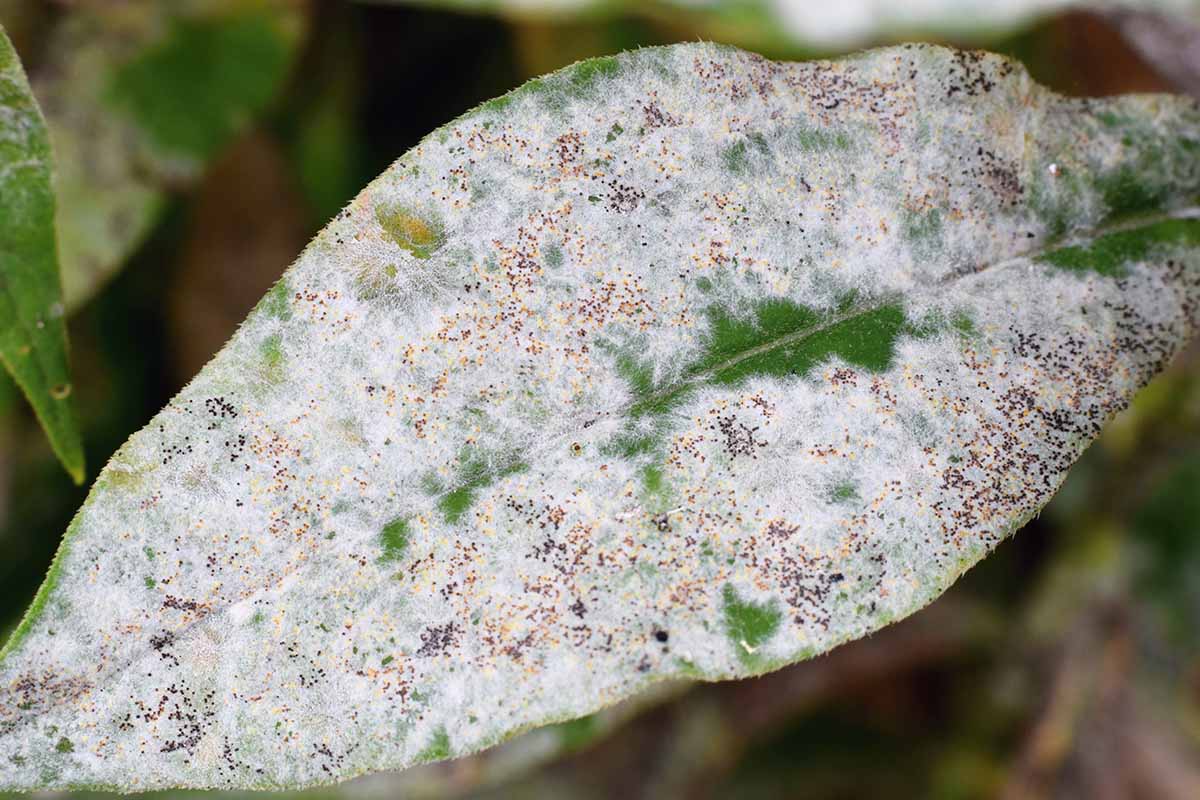
Various species of Erysiphe and Odium fungi may cause this disease and favorable environmental conditions include high humidity, low air circulation, and moderate temperatures.
The fungus forms a superficial growth on the surface of the foliage, extracts nutrients, and weakens the plant.
In severe cases, your celosia will experience distorted or stunted growth, yellow or browning of leaves, and premature leaf drop.
However, it’s worth noting that powdery mildew doesn’t often lead to death except in extreme cases.
You can learn more about powdery mildew in our guide.
7. Root-Knot Nematodes
Root-knot nematodes (Meloidogyne spp.) can also affect celosia.
These microscopic roundworms infest the roots of celosia, feeding and reproducing within the root tissues. This leads to the formation of characteristic galls or knots on the roots.
The presence of root-knot nematodes can lead to stunted growth, yellowing of leaves, and an overall decline in health.
Celosia plants can exhibit reduced vigor and decreased flower production.
Root-knot nematodes can persist in the garden for extended periods and they may be introduced to the garden through infected plant material, contaminated soil, or water sources.
Overcrowded and poorly draining growing conditions help them to multiply and spread.
8. Rot and Damping Off
Phytophthora root rot is a soil-borne fungal disease caused by species of Phytophthora, a type of oomycete or water mold.
If infected, your celosia would experience wilting, rapid yellowing, and softening roots that will give way to the collapse of the root system in young specimens.
During this process, the roots become weakened and unable to absorb nutrients and water from the soil efficiently. This will contribute to your celosia’s decline.
Pythium species are another type of oomycete pathogens that may affect your celosia, causing stem rot. Infections are evidenced by wilting, yellowing of leaves, stunted growth, and general weakness.
You may notice the plant’s aerial parts have an orange to yellow appearance when you see them from a distance.
These patterns of discoloration may look irregular, patchy, or uneven and can vary in shape and size.
However, the horrid visible appearance of your celosia is a late-stage symptom of the more severe crown or root decay and reduced root function. The roots will appear dark and greasy if you remove plants from the soil.
B. cinerea, as described above, is also known to cause stem rot in celosia plants.
Additionally, Rhizoctonia species can also induce stem rot. Rhizoctonia is a soil-borne fungus.
It targets the plant at the soil line, causing damage and infection. Once your celosia is infected, you’ll observe brown lesions on the stem near the soil.
These lesions will gradually expand and encircle the stem, leading to wilting and dieback above the infected area.
The impact of Rhizoctonia can be severe, as the girdling effect of the lesions disrupts the flow of nutrients and water, compromising the plant’s overall health.
As a result, affected celosia will display noticeable wilting and a decline in vigor.
Celosia plants started from seed may also succumb to damping off, another condition caused by Pythium and Rhizoctonia, as well as Fusarium pathogens.
One of the most common problems when starting from seed, a seedling that emerges will appear to be healthy, and then it wilts and dies for no obvious reason.
Excessive moisture, overwatering, high humidity, and overcrowded conditions can all lead to damping off.
9. Salt Injury
High concentrations of soluble salts can cause injury to celosia plants. Soluble salts refer to the dissolved minerals that are present in the soil, primarily sodium, chloride, and other minerals.

When the concentration of these salts becomes too high, it can create an imbalance in the water and nutrient uptake, leading to various symptoms of salt injury.
Celosias are very sensitive to excessive salt accumulation in the roots, and this can negatively impact their growth and overall health. Some common symptoms include leaf burn, stunted growth, wilting, and reduced flowering.
The leaf edges and tips may turn brown or yellow, and in severe cases, they may become necrotic and dry out. The leaf tissue may appear scorched or crispy.
This injury can be caused by irrigation with salty water, over-fertilization, poor drainage, lack of soil amendments, natural soil composition, and living in arid or semi-arid climates.
Tips to Avoid Premature Death
To avoid the premature death of your celosia plants, let’s go over a few things that can contribute to a better life so you can be better prepared.
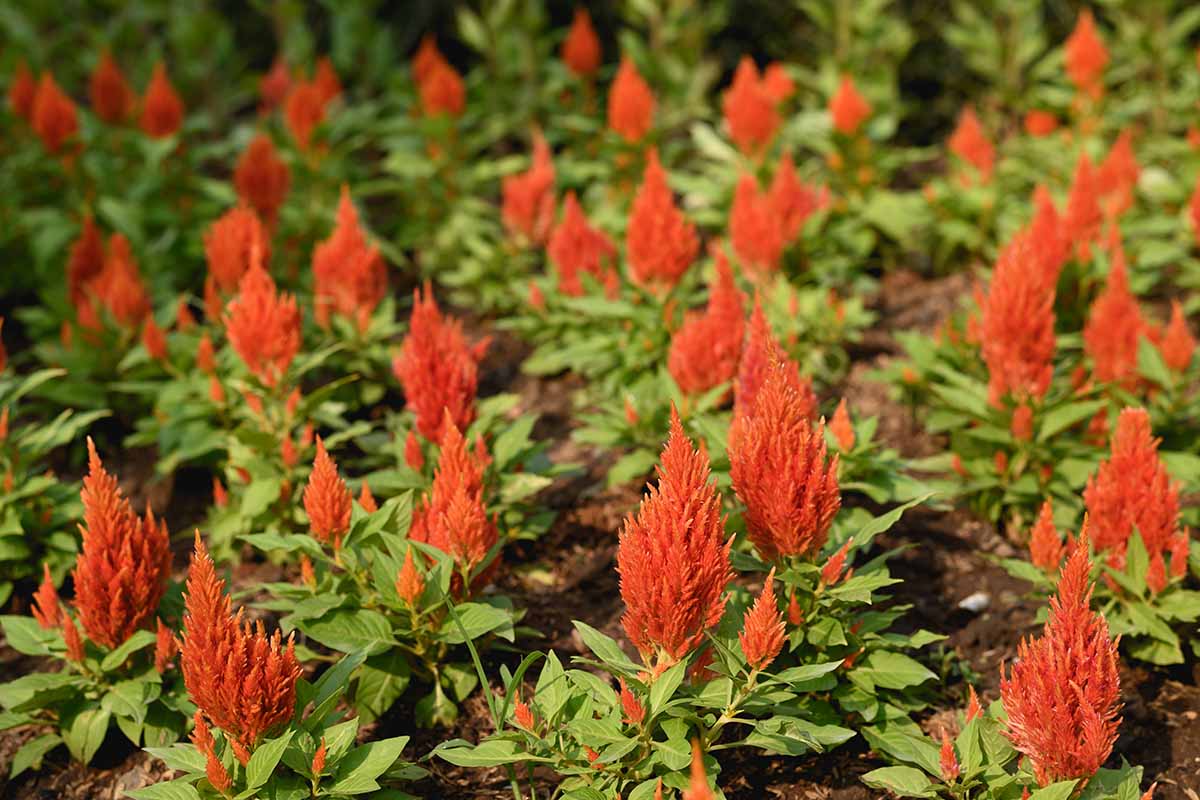
First, remove dead or dying tissue from plants and the soil’s surface, as this reduces the risk of disease spread. Any dead or decaying tissue can harbor pathogens that can infect healthy specimens.
Avoid any unnecessary wounding of your plants. This can be caused by physical damage to the tissues of your celosia, or chemically by the misuse of pesticides or overfertilization.
Physical damage can create entry points for pathogens and increase the risk of infection. Chemical damage can lead to stress and weakening of the plant’s defenses.
Celosias are sensitive plants, and high humidity creates a favorable environment for the growth of fungal pathogens. Ensure your celosia gets enough air circulation and is planted with proper spacing. Overcrowding can lead to increased humidity and poor circulation.
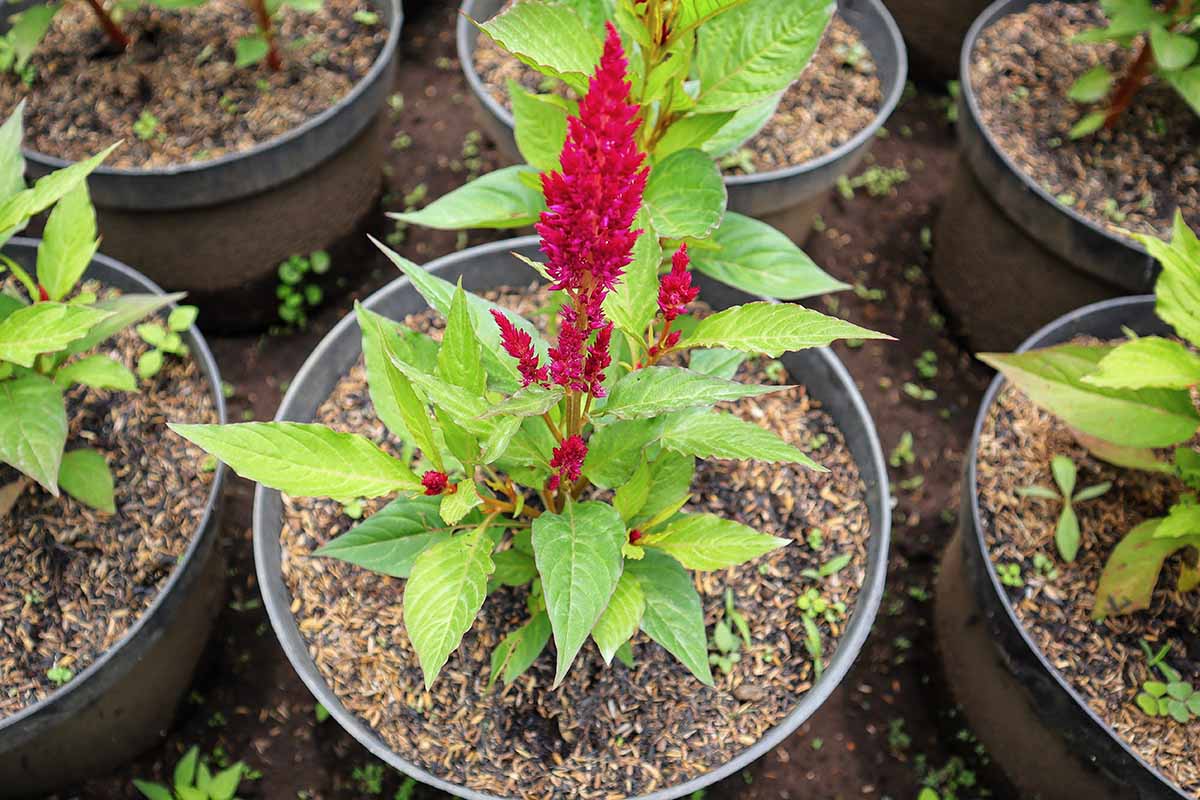
Considering the time of day when you choose to water is also recommended.
As a rule of thumb, it is considered best practice to water in the early morning, allowing celosia foliage to dry during the day. Avoid watering at night, as this can lead to fungal growth.
It is best to minimize handling wet celosia plants as well. If you need to prune or manipulate the plants, do so when they’re dry.
Grow your celosias in a well-drained area away from soil that tends to become oversaturated and waterlogged. Try and avoid overhead watering as much as possible.
Always keep your gardening tools and pots clean and sanitary with rubbing alcohol or bleach before and after gardening.
Dirty tools and pots can harbor harmful pathogens and pests that can spread and infect your plants.
Cleaning gardening implements regularly kills any lingering pathogens or pests, reducing the risk of contamination.

Avoid planting early in the season when soil temperatures are below 60°F.
Planting in cold soil can lead to poor root development and slow growth, making the plants more susceptible to stress and disease.
When soil temperatures are too low, it hampers nutrient uptake and impacts metabolism, hindering the plant’s ability to thrive.
If growing in the ground, avoid planting celosia or other species susceptible to the same diseases in the same location year after year.
Rotate them to different areas of the garden to break the cycle and minimize the buildup of pathogens in the soil.
It is also always best to start with disease-free specimens and select varieties with high disease tolerance.
Obtain transplants from reputable sources that ensure disease-free stock. This reduces the chances of introducing harmful pathogens to your garden.
Solarization can be considered when dealing with soil-borne pests or diseases. This process involves covering the soil with a clear plastic sheet to trap heat from the sun.
The trapped heat raises the soil temperature, killing certain pathogens and pests.
Work on the health of your soil by amending with compost or compost tea to improve its fertility and structure.
Enhancing the diversity and activity of soil microbes can help create a balanced and thriving soil ecosystem, which supports your plants’ overall health and resilience.
Depending on your location, you may wish to check the salt level of your water by conducting a water analysis. Avoid overfertilizing, as this can lead to an accumulation of salts in the soil.
When you suspect temperatures will drop, taking proactive measures to protect your celosia plants is essential.
One effective method is to apply a layer of mulch around the base. Mulch acts as an insulating barrier, helping to regulate soil temperature and protecting the roots from extreme cold.
Adopting effective pest management strategies is important to deal proactively with pests.
Integrated pest management strategies include regular monitoring to catch any infestations early on. Utilize physical barriers such as row covers or netting to create a protective shield around your plants as needed.
Employ holistic treatments like neem oil, insecticidal soaps, and organic repellents to deter pests naturally.
Consider companion planting with pest-repelling varieties like marigolds or garlic to create a less appealing environment for pests. Finally, get creative with traps such as beer traps for slugs or other inventive methods to catch and control pests.
Implementing these strategies can help protect your celosia plants and promote their healthy growth.
Saving Celosia Plants from the Brink of Death
Understanding and addressing the various factors that can lead to the premature death of celosia plants is crucial for their survival and longevity.
We explored several common threats that can affect celosia’s journey from the soil to seed to flowering.
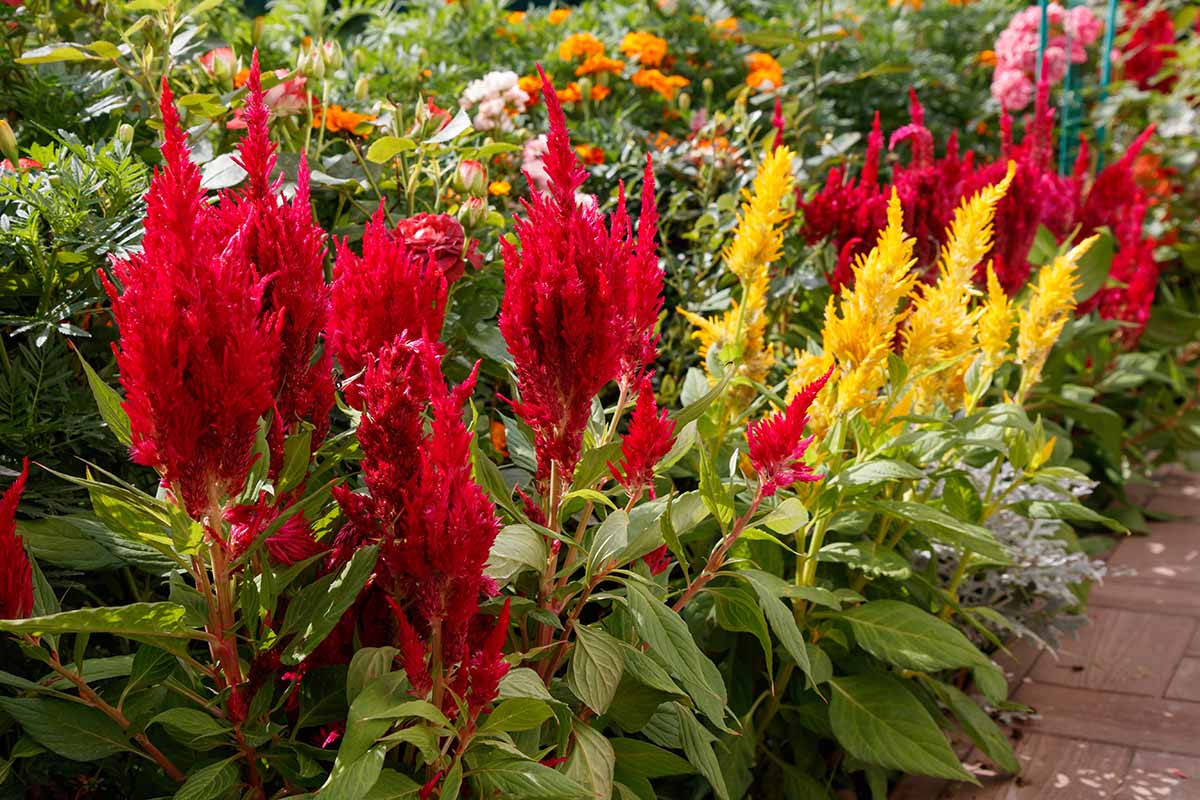
It is essential to provide optimal growing conditions and maintain plant health as best we can.
By following the recommended preventive care tips, we can ensure that our celosia plants thrive and bring beauty to our gardens.
We would love to hear about your experiences! Feel free to comment and share below.
If you found this guide valuable and are interested in identifying diseases in other flowers, check these articles out next:
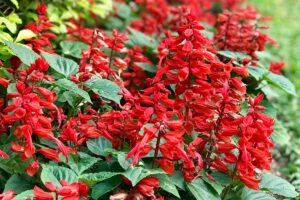


Hello,
I planted Celosia about 3 weeks ago. Leaves are turning yellow. Other than that flowers are growing and look healthy. I’m stumped.
Hi Dawn, could you give me a bit more information? Or, better yet, send me some pictures? It would help if you could tell me how moist the soil is, what the sun exposure is like, and what it was like prior to planting. What has the weather been like recently? Do you see any signs of pests or diseases on the plant?